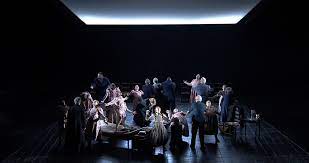London’s theatre scene boasts a rich and varied history, evolving from modest Elizabethan playhouses to the vibrant West End district renowned worldwide. This journey reflects the city’s cultural shifts, societal changes, and the enduring allure of live performance.
The late 16th century marked the dawn of permanent public playhouses in London. In 1576, James Burbage constructed “The Theatre” in Shoreditch, setting a precedent for theatrical venues. Shortly after, the “Curtain” theatre emerged nearby, both hosting performances by Shakespeare’s company. These establishments were pivotal in the development of English drama, providing a platform for playwrights and actors to showcase their talents.
The Globe and the Golden Age
In 1599, the timber from “The Theatre” was repurposed to build the Globe Theatre in Southwark, a district beyond the jurisdiction of the City of London. This venue became synonymous with Shakespeare’s works, offering audiences a space to experience his plays in their intended form. The early 17th century, often referred to as the Golden Age of English drama, saw the emergence of playwrights like Ben Jonson and Christopher Marlowe, whose contributions enriched London’s theatrical landscape.
The mid-17th century brought significant upheaval. The Puritan-led Parliament closed theatres in 1642, deeming them sinful. This period, known as the Interregnum, saw a temporary halt in public performances. However, with the Restoration of Charles II in 1660, theatres reopened, and the era of Restoration comedy flourished. Notably, the Theatre Royal in Drury Lane, designed by Christopher Wren, opened in 1674, becoming a cornerstone of London’s theatrical community.
The 18th and 19th centuries witnessed the consolidation of London’s theatre district in the West End. Venues like the Theatre Royal Haymarket (opened in 1720) and the Royal Opera House (opened in 1732) became central to London’s cultural life. The 19th century introduced the musical as a dominant form, with productions like “The Beggar’s Opera” (1728) and “Tom and Jerry” (1821) paving the way for the modern musical theatre genre.
The 20th and 21st centuries have seen London’s theatre scene diversify and expand. The National Theatre, founded in 1963, has become a hub for innovative productions. Recent revivals, such as Oscar Wilde’s “The Importance of Being Earnest” at the National Theatre, demonstrate the enduring relevance of classic plays. Additionally, the discovery of the Curtain Theatre’s remains in Shoreditch highlights London’s ongoing commitment to preserving its theatrical heritage.
From its humble beginnings in Shoreditch to the grandeur of the West End, London’s theatre history is a testament to the city’s dynamic cultural evolution. The enduring appeal of live performance continues to captivate audiences, ensuring that London’s theatrical legacy remains vibrant and influential.
